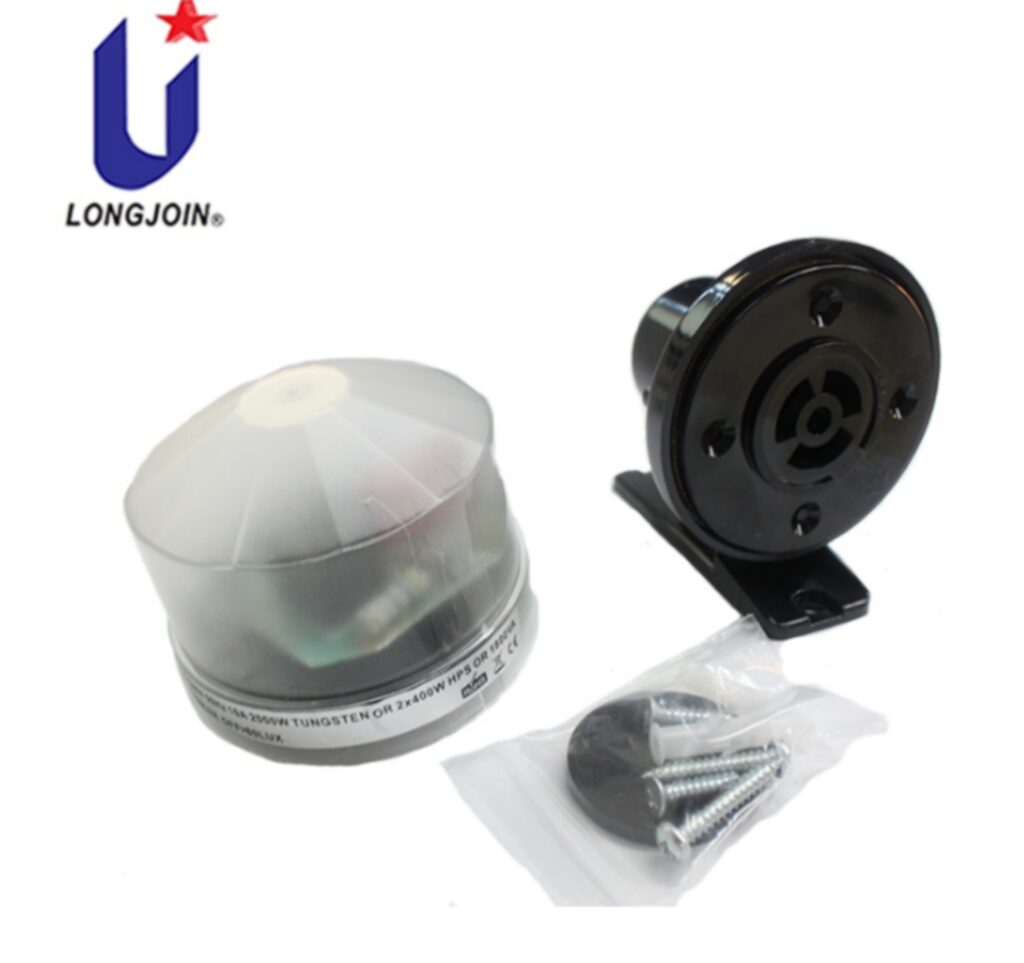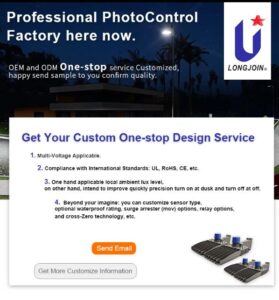Contents
- What are Photocell Sensors and how they work
- What is Low-Voltage lighting design and how it works
- Why Shanghai Longjoin recommends Photocell Sensors in lightning design
- The Major benefits of using 12V Photocell Sensors in lightning design
- Reduced energy usage
- Extended lifespan
- Lower electricity costs
- Reduced maintenance expenses
- Reduced carbon footprint
- Eco-friendly manufacturing
- Conclusion
In today’s world, where being environmentally conscious is necessary and saving money is always a good idea, it’s critical to investigate energy-efficient lighting solutions. Low-voltage lighting, such as that used in 12V Photocell Sensors, is becoming increasingly popular.
What are Photocell Sensors and how they work
A photocell automatically manages the on and off periods of low voltage lights based on ambient light levels, making it a handy and energy-efficient outdoor lighting solution.
Photocells detect the quantity of light in the surrounding environment and provide a signal to the lighting controller, which turns the lights on or off accordingly. They can be utilized in a wide range of outdoor lighting applications, including security lights, landscape lighting, and streetlights.

(Street light Photocell 12-24V JL-205-12D-24D by Shanghai Longjoin)
What is Low-Voltage lighting design and how it works
Low-voltage lighting is a system that operates at significantly lower voltage levels than standard high-voltage systems. While ordinary lighting typically operates at 120 volts or greater, low-voltage systems run at 12 or 24 volts, making them intrinsically more energy-efficient.
Transformers are used in low-voltage lighting systems to reduce voltage levels, lowering the amount of electricity required to light the bulbs. This technology provides fine control over illumination intensity, making it suited for both residential and commercial applications.
Why Shanghai Longjoin recommends Photocell Sensors in lightning design
As with any purchase, you’re probably wondering if photocell light sensors are a good idea for your home. The answer is based on a simple question: do you enjoy convenience?
If you enjoy coming home after dark without having to turn on the lights, a photocell light sensor is a great purchase. When it becomes dark outside, the sensors detect it and automatically turn on your outside lights, saving you the inconvenience of having to turn them on manually every day.
Photocell light sensors are also useful for security, as their automatic activation can give your home’s exterior a lived-in appearance even when you’re not there.

(OEM and ODM customized service, by Shanghai Longjoin.)
Of course, it’s crucial to remember that photocell light sensors are only worthwhile if you buy them from a reliable vendor. Not all light detection systems are created equal. At Shanghai Longjoin, we take great effort to ensure that the quality of our photocells meets our customers’ requirements, and we even offer customized goods for their convenience. You can check our wide variety of Photocells here.
The Major benefits of using 12V Photocell Sensors in lightning design
- Reduced Energy Usage
The key advantage of 12V Photocell Sensors is their high energy efficiency. It utilizes substantially less electricity than standard systems since it operates at only a fraction of the voltage. This translates into lower energy bills for homeowners and lower operational costs for businesses.
- Extended Lifespan
Photocell sensors have a longer lifespan than their higher-voltage equivalents. These photocells generate less heat, which leads to a longer lifespan and fewer replacements. This saves money while also reducing the environmental impact of bulb manufacturing and disposal.
- Lower Electricity Costs
Switching to Photocell Sensor lighting design might result in significant savings on electricity expenditures. Businesses can benefit from lower operational costs, while homeowners can experience a significant decrease in their monthly spending. Over time, these savings add up.
- Reduced Maintenance Expenses
Photocell Sensor lighting systems require less maintenance due to their extended lifespan. This results in fewer replacements and service calls, which contributes to cost savings.
- Reduced Carbon Footprint
One of the most convincing reasons to use 12V Photocell Sensors lighting solutions is their beneficial environmental impact. Reduced energy usage leads in a lower carbon footprint because less electricity is generated from fossil fuels. This choice is consistent with worldwide efforts to combat climate change.
- Eco-Friendly Manufacturing
Photocell sensors are often made with ecologically friendly materials and technologies. This commitment to sustainability extends beyond their operations and into their products, resulting in a greener globe.
Switching to low-voltage lighting is a practical and responsible decision that not only saves energy and money, but also has a minimal environmental impact.

(JL-224BK Photocell Light Sensor Omnidirectional, by Shanghai Longjoin)
A photocell is a critical component in low voltage lighting systems, enabling ease, energy efficiency, and automatic control of low voltage lights based on ambient light levels. When selecting a photocell for low voltage lighting, it is critical to examine the type of photocell, sensitivity, voltage and current ratings, and weatherproofing. Taking these aspects into mind will ensure that your lighting system is both efficient and effective.
Conclusion:
To summarize, the use of 12V Photocell Sensors in energy-efficient lighting design has various benefits. Photocell sensors, also known as light sensors or photocontrols, automatically turn on and off low-voltage lights based on ambient light levels. When paired with low-voltage lighting systems, they offer significant advantages.
Low-voltage lighting uses lower voltage levels, often 12 or 24 volts, than regular high-voltage systems. This naturally makes them more energy efficient. Low-voltage lighting systems use transformers to reduce the voltage, resulting in lower energy consumption and power costs for homeowners and businesses.
Another advantage of 12V photocell sensors is their long life. Because these sensors emit less heat, they last longer and require fewer replacements. This saves money while also reducing the environmental impact of bulb manufacturing and disposal.
In addition to energy savings and increased lifespan, using 12V Photocell Sensors in lighting design results in lower maintenance costs. Longer lifespans reduce the need for replacements and require fewer service calls, resulting in cost savings.
Furthermore, the use of 12V Photocell Sensors helps to reduce carbon impact. These systems support worldwide efforts to combat climate change and promote environmental sustainability by utilizing less fossil fuel-generated electricity.
Furthermore, the manufacturing procedures and materials utilized to produce Photocell Sensors are environmentally benign, contributing to a greener earth.
Finally, the combination of low-voltage lighting design and 12V photocell sensors provides practical and responsible options for energy-efficient lighting. These systems give economic benefits by reducing energy use, power costs, and maintenance charges. They also help to ensure environmental sustainability by lowering carbon emissions and supporting eco-friendly production methods. Using 12V Photocell Sensors in lighting design benefits both people and the environment.
Keywords: low voltage, Photocell Sensors, lightning design, electricity, savings






